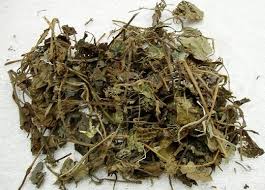Antibacterial. Antiviral. Diuretic.[1,3]
[1] Barefoot Doctors Manual- Published by Madrona Publishers Seattle Washington
ISBN 0-914842-52-8
[2] A Complete English Dictionary of Medicinal Terms in Chinese Acupuncture
and Herbalism 1981- Henry Lu Chinese Foundations of Natural Health- The Academy
of Oriental Heritage, Vancouver, Canada.
[3] Translation notes from Gary Seiford and Hocu Huhn- NSW College of Natural
Therapies. Sydney Australia (1982).
[4]
Chinese Herbal Medicine Materia Medica- Dan Bensky and Andrew Gamble-
Eastland Press 1986 Seattle Washington ISBN 0-939616-15-7
Images
1.
en.wikipedia.org
by Jeffdelonge CC BY-SA 3.0
2.
[1]
3.
old.tcmwiki.com Decanoyl acetaldehyde, lauric aldehyde,
methyl-n-nonylketone, myrcene, capric aldehyde, capric acid, cordarine, calcium
sulfate, calcium chloride, isoquercitrin, quercitrin, reynoutrin, hyperin.[1]
References
[1] Chinese Herbal Medicine Materia Medica- Dan Bensky and Andrew Gamble-
Eastland Press 1986 Seattle Washington ISBN 0-939616-15-7
 Houttuynia
cordata. 鱼
腥 草
Yú xīng cǎo-
"Fish smelling herb"
Tsi,
Fish mint Family: Saururaceae
Houttuynia
cordata. 鱼
腥 草
Yú xīng cǎo-
"Fish smelling herb"
Tsi,
Fish mint Family: Saururaceae

